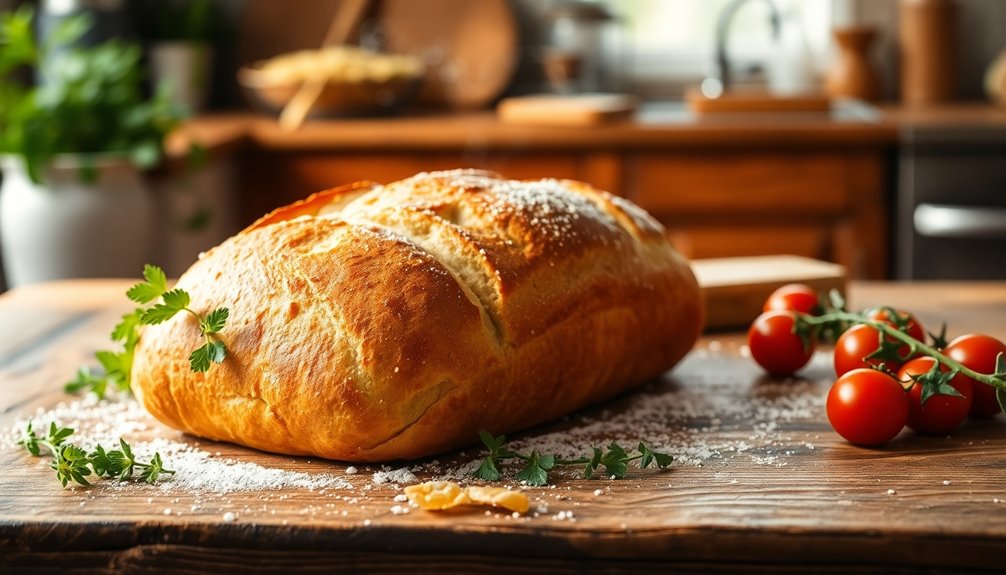When you think of the "Bread of Life," remember that Jesus offers you essential spiritual nourishment that goes beyond just physical food. In John 6:35, He promises that faith in Him leads to lasting satisfaction. This idea dates back to the Manna provided to the Israelites in Exodus, emphasizing the difference between temporary meals and true spiritual fulfillment. Bread symbolizes unity and sustenance in various cultures, especially during significant occasions like Passover. Exploring this concept reveals how bread forms connections among communities. You might find the deeper significance of bread in your spiritual and everyday life to be quite enlightening.
Key Takeaways
- Jesus is referred to as the "Bread of Life," symbolizing essential spiritual nourishment and eternal fulfillment (John 6:35).
- The concept of bread encompasses both physical sustenance and deeper spiritual significance throughout biblical teachings.
- In Jewish tradition, bread, especially unleavened during Passover, represents purity, deliverance, and communal unity.
- Volunteering in community events, like those at the Bread of Life Mission, fosters family teamwork and empathy while addressing essential needs.
- Scholarly resources explore the spiritual and communal significance of bread, particularly in relation to faith and fulfillment in daily life.
Introduction
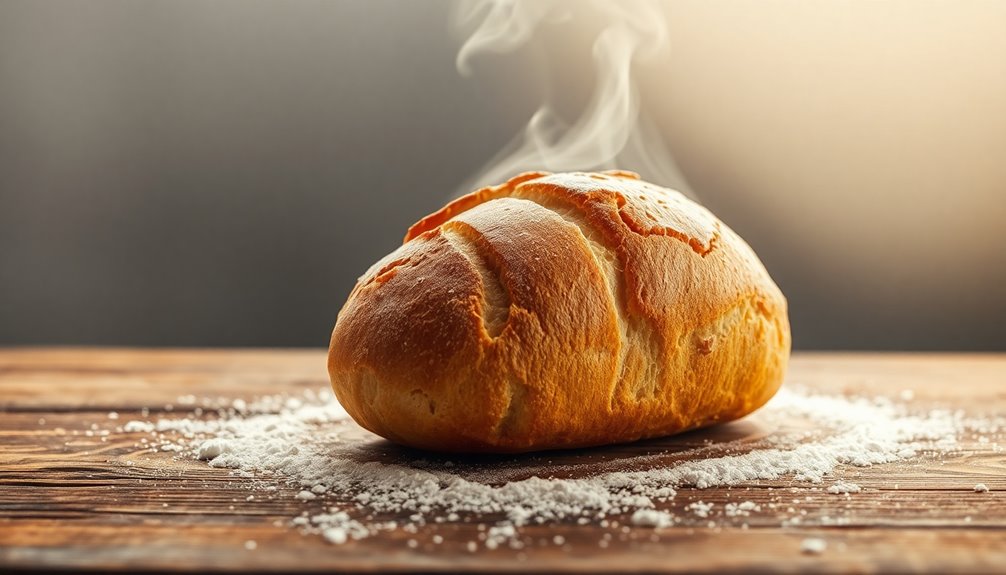
When you think about what sustains you spiritually, the concept of the "Bread of Life" comes to the forefront. Introduced in the Gospel of John, this idea emphasizes that Jesus is your essential spiritual nourishment. He promises eternal life to those who partake in Him, inviting you to embrace a deeper connection that transcends mere physical needs.
The backdrop of this teaching is the miraculous feeding of the 5,000, which highlights the distinction between temporary, physical sustenance and the lasting spiritual fulfillment Jesus offers. He contrasts Himself with the manna provided to the Israelites during their desert wanderings, declaring that He's the true bread from heaven sent by God.
In John 6:35, you find assurance that if you come to Jesus, you'll never hunger or thirst spiritually again. This promise emphasizes that by placing your faith in Him, you'll find ultimate satisfaction for your spiritual needs.
Jesus' "I Am" statement, "I am the Bread of Life," serves as a powerful declaration of His divine nature and role, offering you not just physical sustenance, but also spiritual life and fulfillment.
Scriptural Basis for Bread

When you explore the scriptural basis for bread, you'll find rich references that highlight its significance.
From the manna in Exodus to Jesus declaring Himself the "Bread of Life," these passages illustrate both physical and spiritual nourishment.
Let's look closely at these primary and secondary Bible references to understand the depth of this symbolism.
Primary Bible References
The scriptural basis for bread as a vital symbol in both physical and spiritual contexts is deeply rooted in biblical texts. In Exodus 16, God provides manna as bread from heaven to the Israelites, showcasing His care and sustenance in their time of need. This divine provision sets the stage for understanding Jesus' declaration in John 6:32, where He clarifies that true bread from heaven is distinct from the manna provided during Moses' time.
In John 6:35, Jesus boldly states, "I am the bread of life." This powerful claim emphasizes that whoever believes in Him will never hunger or thirst spiritually. The discourse in this chapter connects physical sustenance with spiritual nourishment, illustrating the necessity of faith in Jesus for eternal life as expressed in John 6:51-58.
Additionally, bread holds a significant role in Jewish tradition, especially during Passover, symbolizing life and covenant.
Jesus' teachings on bread deepen this understanding, inviting you to see Him as the ultimate source of spiritual sustenance. Embracing this truth leads to a profound relationship with Him, fulfilling your deepest spiritual hunger.
Secondary Bible References
Numerous secondary Bible references further illustrate the significance of bread in both physical and spiritual realms. In Exodus 16, God provides manna to the Israelites, symbolizing divine provision. This heavenly bread foreshadows the spiritual nourishment found in Christ as the Bread of Life (John 6:32-33). Psalm 78:24-25 even describes this manna as "the bread of angels," highlighting God's care for His people.
In the New Testament, Jesus emphasizes the importance of spiritual nourishment in Matthew 4:4, stating that "man shan't live by bread alone, but by every word that comes from the mouth of God." This teaching underscores the necessity of looking beyond physical sustenance.
At the Last Supper, detailed in Luke 22:19-20, Jesus transforms bread and wine into His body and blood, establishing the Eucharist and connecting bread with spiritual sustenance.
Finally, in John 6:51, He proclaims, "I am the living bread that came down from heaven." This statement not only ties back to the manna but also emphasizes His role as the ultimate source of life.
Even the miracle of feeding the 5,000 with five loaves and two fish reflects this profound symbolism of bread as essential for both body and soul.
Ancient Bread-Making Practices

Dating back at least 14,000 years, ancient bread-making practices reveal a fascinating glimpse into early human innovation. Evidence shows that people ground grains like wheat and barley using stone tools long before agriculture was established.
You'd mix the flour with water to create a dough, shaping it into loaves of bread that were left to rise. Ancient cultures developed leavening techniques to produce lighter, airier loaves. They harnessed naturally occurring yeast from the environment or fermented dough to achieve this.
In ancient Egypt, bread became a staple food, showcasing various types, including flatbreads and leavened loaves baked in clay ovens or on hot stones. Bread wasn't just sustenance; it held significant cultural and religious importance.
Often, it was offered in temples and used in various rituals, symbolizing life and sustenance for the community. Through these practices, you can see how bread-making not only nourished bodies but also nurtured social and spiritual connections among ancient peoples.
Understanding these methods gives you a deeper appreciation for the role of bread in shaping human civilization.
Symbolism of Bread in Scripture
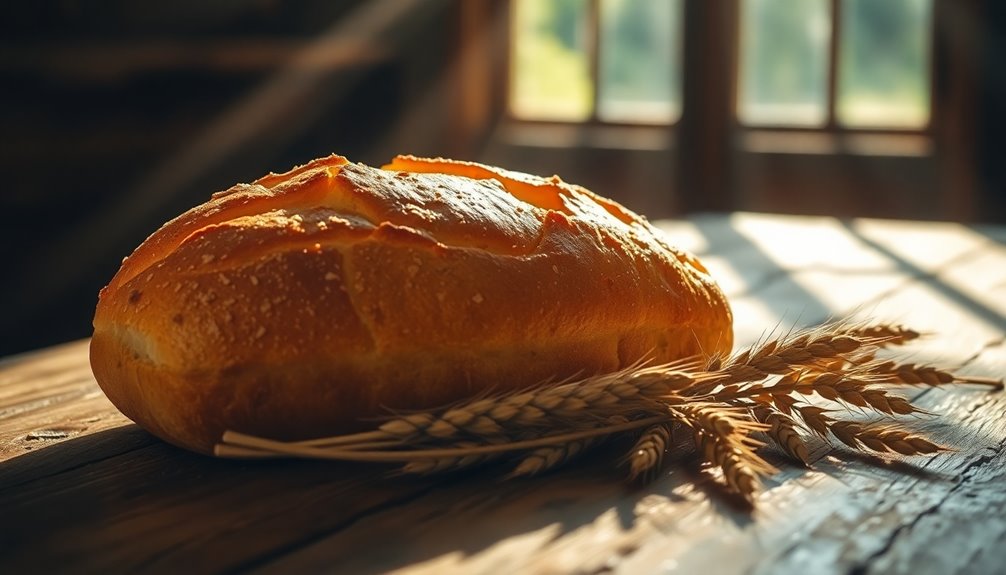
Bread has long been more than just a basic food; it carries profound significance in religious contexts, particularly within scripture. In the Bible, bread symbolizes sustenance and life, essential for survival. When God provided manna to the Israelites in the desert (Exodus 16), it illustrated His provision for His people.
Jesus' declaration as the "Bread of Life" in John 6:35 emphasizes the distinction between physical bread, which nourishes temporarily, and the true bread from heaven that offers spiritual nourishment leading to eternal life through faith in Him.
The use of unleavened bread during Passover highlights its role in representing purity and the removal of sin, symbolizing God's deliverance of Israel from slavery (Exodus 12).
Furthermore, bread signifies community and fellowship, as demonstrated in shared meals that foster relationships and unity among people. This metaphor extends into the Eucharist, where bread represents the body of Christ, emphasizing the spiritual sustenance believers receive through communion (1 Corinthians 11:23-26).
In these ways, bread transcends mere sustenance, embodying deep spiritual truths central to faith and communal life.
Bread as a Life Symbol
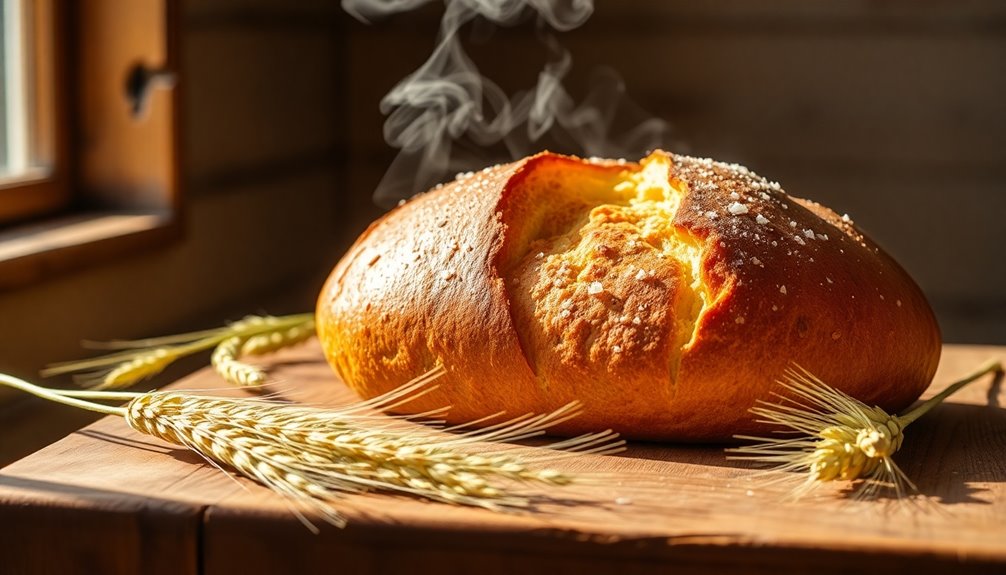
When you think about bread, you might only see it as a basic food item, but there's so much more beneath the surface.
Different cultures view bread as a powerful symbol of life, unity, and sustenance, often tied to deep traditions and beliefs.
Let's explore how these interpretations shape our understanding of bread's significance and debunk some common misconceptions along the way.
Debunk Common Misconceptions
While many people see bread merely as a source of physical nourishment, this narrow view misses its richer spiritual symbolism. The term "bread of life" goes beyond just feeding the body; it emphasizes the essential spiritual sustenance that faith in Jesus provides. When you think of bread, remember that it represents not just temporary satisfaction for hunger, but a deeper connection to eternal life.
Common misconceptions arise when you reduce bread to its physical form, ignoring its significance in Jewish tradition. Throughout history, bread has symbolized divine provision, like the manna in the desert (Exodus 16). This connection highlights the importance of seeking spiritual fulfillment rather than relying solely on material needs.
Jesus' declaration as the "bread of life" invites you into a relationship with Him, urging you to look beyond mere survival. By embracing this concept, you can transform your understanding of nourishment, recognizing the profound spiritual truths it embodies. As you reflect on this, consider how uplifting psalm good morning bible verses can inspire your day and deepen your faith.
Ultimately, bread isn't just about what fills your stomach; it's about what nourishes your soul, guiding you toward a life enriched by faith and connection with God.
Cultural Interpretations of Bread
Seeing bread as merely physical sustenance limits its broader significance across cultures. Bread gives life, symbolizing nourishment and community. In many cultures, it serves as a staple food, reflecting shared traditions and values. For instance, in ancient Jewish customs, unleavened bread during Passover signifies both the urgency of the Exodus and God's provision, illustrating how bread intertwines with spirituality.
The act of "breaking bread" is more than just sharing a meal; it fosters social bonds and community solidarity. This ritual highlights the essential role of communal eating, reinforcing connections among family and friends.
Throughout history, bread has also represented divine provision, reminiscent of the manna given to the Israelites in the desert, underscoring the belief in God's sustenance for both physical and spiritual needs.
Moreover, bread-making practices often become cherished family traditions, connecting generations through shared recipes and rituals. These customs emphasize that bread isn't just food; it's a life symbol that nurtures relationships and cultures.
Recognizing this deeper significance enriches our understanding of bread's role in various societies, reminding us that it truly gives life in more ways than one.
Volunteer Opportunities for Families

Volunteering as a family at the Bread of Life Mission is a rewarding way to give back while strengthening your bond.
You can participate in monthly distribution events, where teamwork and community spirit come alive as you help those in need.
It's easy to get involved, and choosing specific dates makes it convenient for your family to contribute regularly.
Family Volunteering Together
Family volunteering together creates a unique opportunity for bonding and growth, allowing you to make lasting memories while giving back to your community. Engaging in volunteer activities as a family fosters a sense of unity and teamwork, helping everyone understand the importance of service.
When you participate in events, like monthly distributions with organizations such as the Bread of Life Mission, you're teaching your children valuable lessons about empathy, compassion, and social responsibility from a young age.
These shared experiences not only strengthen family ties but also enhance personal growth. As you tackle tasks together, you'll develop essential skills like communication, leadership, and problem-solving.
Many organizations offer flexible volunteer opportunities tailored for families, ensuring everyone—from young children to adults—can participate meaningfully.
Community Service Initiatives
Community service initiatives offer families a chance to connect while making a real difference in their neighborhoods. Volunteering through these programs gives life to the spirit of giving back, helping strengthen social ties in your community.
The Bread of Life Mission organizes monthly distribution events where your family can assist in providing essential food and supplies to those in need. By participating, you promote community solidarity and show your children the importance of helping others.
You can sign up for these distribution events three days before they occur, allowing you to actively contribute to supporting registered households receiving no-cost essential items. These opportunities encourage families to work together, enhancing personal growth and developing important life skills.
Engaging in continuous volunteer opportunities with the Bread of Life Mission is crucial for sustaining life-saving initiatives. Your involvement transforms lives through charitable contributions and community engagement.
Impact of Volunteering on Families

Engaging in volunteer activities together can significantly strengthen the bonds within your family while fostering a sense of shared purpose. Whenever you come together for a common goal, like serving your community, you cultivate teamwork and enhance relationships.
As you volunteer, you're not just helping others; you're also teaching your children the importance of giving back, instilling values of empathy and community service.
Whoever participates in these acts of kindness often experiences improved mental health, as service reduces stress and brings a sense of accomplishment. Just as Johns Gospel reminds us of the "Light of the World," your family can shine brightly by making a difference in the lives of others.
Volunteering creates access to essential resources and support networks for your family, helping you navigate challenges more effectively. Plus, when you contribute to the well-being of your community, it fosters a culture of support and solidarity that benefits everyone involved.
Additional Resources
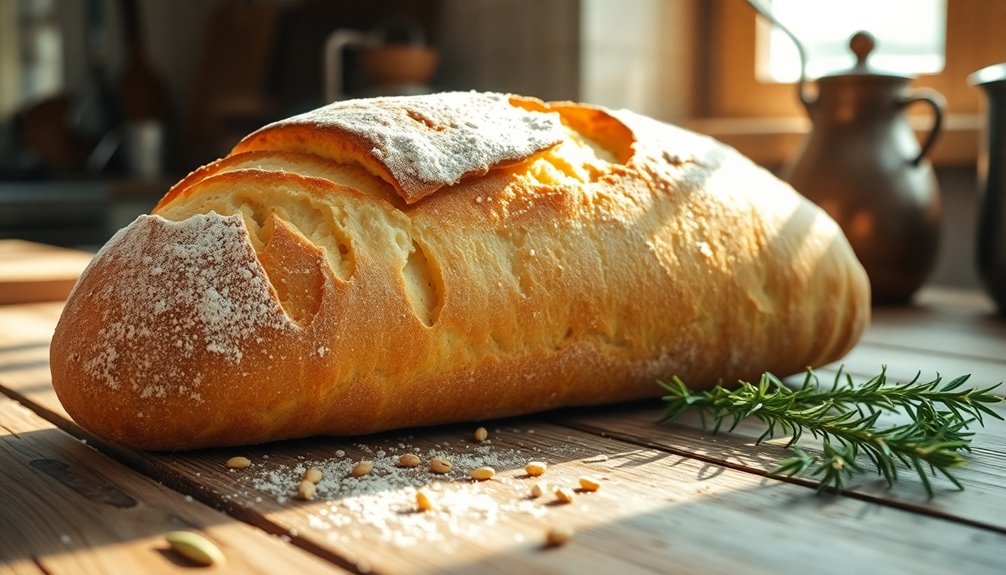
If you're looking to make a meaningful impact through volunteering or need support for yourself or your family, several valuable resources can help.
The Bread of Life Mission has been serving communities for 30 years, providing essential food and supplies through monthly distribution events. You can register your household three days before an event and receive items at no cost, just by proving your address.
For more personalized assistance, consider the Community Care Program. Community Health Workers are available to help you navigate various resources related to nutritional, medical, child care, and mental health needs. This tailored support can make a significant difference in your family's well-being. Additionally, understanding advance directives can help you make informed decisions about care and support during challenging times.
If you're interested in exploring the deeper significance of Jesus as the Bread of Life, there are numerous scholarly writings and theological interpretations available.
These resources can enhance your understanding and provide context on how this concept applies today.
Frequently Asked Questions
What Is the Meaning of the Bread of Life?
When you think about the meaning of bread, it often represents sustenance and nourishment.
In a broader sense, it symbolizes what fulfills you both physically and spiritually. You might consider how food fuels your body, but deeper fulfillment comes from connections and experiences.
This idea highlights the importance of seeking something beyond mere physical needs, urging you to explore what truly satisfies your soul, whether through relationships, purpose, or faith.
What Scripture Is the Bread of Life?
When you ask what scripture refers to the concept of being nourished spiritually, you'll find it prominently in the Gospel of John.
Specifically, John 6:35 states, "I am the bread of life; whoever comes to me shan't hunger." This passage emphasizes the importance of seeking spiritual fulfillment.
Additionally, verses like John 6:51-58 further elaborate on the necessity of partaking in Jesus for eternal life, highlighting the deep connection between faith and sustenance.
What Does Bread Symbolize in Life?
In life, bread symbolizes sustenance and nourishment, both physically and spiritually. It represents the essential needs you have for survival, connecting you to various cultures and traditions.
Beyond just food, bread reflects deeper human desires, like the search for fulfillment and connection. When you think of bread, consider how it embodies your need for comfort, community, and the spiritual journey that nourishes your soul as much as your body.
What Is the Bread of Life an Analogy For?
When you think about bread, it often symbolizes sustenance and nourishment in your life. It represents the essential needs you have, both physically and spiritually.
In various contexts, bread can embody community, sharing, and the basics of survival.

